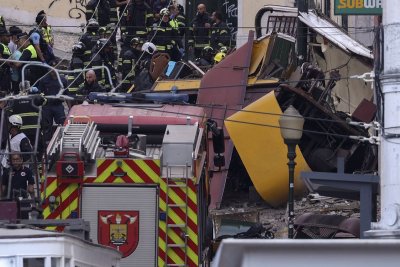Why Dodgers’ faulty bullpen construction will cost them World Series
Was Edgardo Henriquez the best option to pitch to Vladimir Guerrero Jr. in the seventh inning with two outs and runners on the corners?
Maybe, maybe not.
And that was the problem.
The problem was that Dodgers manager Dave Roberts didn’t have a choice that was clearly better than to place the game in the hands of a hard-throwing but unreliable 23-year-old rookie.
Henriquez walked Guerrero on a 99.9-mph fastball that sailed into the opposite batter’s box, evading the grasp of catcher Will Smith and allowing Addison Barger to score.
A manageable two-run deficit was now three and about to become four.
The Dodgers were on their way to a 6-1 loss to the Toronto Blue Jays on Wednesday night, the Game 5 result placing them at a three-games-to-two deficit in this World Series.
For Roberts, that seventh inning didn’t represent a manager’s nightmare. That was a manager’s night terror.
What else could Roberts do?
Stick with starting pitcher Blake Snell? Snell had already pitched to Guerrero three times and his pitch count was at 116.
Use closer Roki Sasaki as a fireman? He’s their only dependable reliever and Roberts wasn’t about to use him in a non-elimination game in which his team was down.
Turn to last year’s postseason hero Blake …? Never mind, that question isn’t even worth being asked in its entirety.
“It’s hard because you can only push a starter so much,” Roberts said. “I thought Blake emptied the tank.”

The Dodgers somehow concealed their piñata of a bullpen in the three previous rounds of the postseason, but that bullpen is now catching up with them.
Reversing their series deficit will almost certainly require some of their starters to pitch in unfamiliar roles over the next two games, including Shohei Ohtani as an opener on three days’ rest in a potential Game 7.
Snell figures to be a candidate to also pitch in Game 7, perhaps as a middle reliever. Tyler Glasnow is expected to be available out of the bullpen in at least one of the two remaining games.
Besides Sasaki, the relievers can’t be trusted.
In each of the team’s three losses in this series, the games turned when the starting pitcher was removed with men on base. In all three instances, the bullpen made a mess of the game, allowing the inherited runners to score.
“You look at the three games that we lost, it spiraled on us with guys on base,” Roberts said. “Guys got to be better.”
They can’t.
This reality makes the bullpen’s heroic performance in the 18-inning victory in Game 3 all the more miraculous. The Dodgers are fortunate this series isn’t already over.
The construction of this particular bullpen has to be one of the greatest front-office blunders in franchise history, as it could cost the team a World Series in a season in which it has Ohtani, Freddie Freeman and a billion-dollar rotation.
How did this happen?
Start with Tanner Scott and Kirby Yates. The Dodgers committed a combined $85 million to the two relievers and neither of them is even on the roster.
Look at the injured list. Brusdar Graterol missed the entire season with shoulder problems. Evan Phillips underwent Tommy John surgery.
Finally, examine what the Dodgers didn’t do at the trade deadline. Everyone — and by everyone, I mean everyone except Andrew Friedman’s front office — knew they were in desperate need of bullpen help. Counting on some internal solutions working out, the only reliever they acquired was Brock Stewart. The notoriously brittle Stewart went down with a shoulder injury and didn’t pitch in the postseason.
What the Dodgers did was the baseball equivalent of building a breathtaking mansion but forgetting to install any toilets.
Now, the entire residence stinks, the Dodgers one loss away from losing a World Series that should be theirs.


